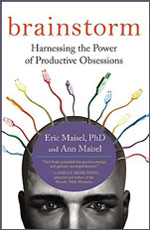"During my junior and senior year in high school and for a semester in college I thought I would become an astronomer. Why? Because the night sky moved me. However, I quickly learned that the scientific details of the sky did not interest me. I looked elsewhere to experience mystery. For many people, though, the night sky remains, or resurfaces, as one of their primary places of mystery. Consider, for instance, Charles Calia, whose passion for the night sky was unexpectedly reawakened while he was gazing at the stars in the presence of his two young daughters.
"In middle age, Calia, a novelist, returned to his youthful love of astronomy. From that experience emerged The Stargazing Year, in which he chronicles twelve months spent enraptured by nighttime skies and his attempt, begun in the dead of a Connecticut winter, to build his own backyard observatory. The Stargazing Year weaves together Calia's building escapades, his night-sky observations, constellation mythology, and familial interactions. It is not a year of astronomical breakthroughs — no new planets are discovered, no new comets are named — but rather a year of joyful participation in mystery.
"A brainstorm is creativity in action and problem solving in action, but it is also a gathering into mystery, a journey by neurons and not by starlight. As we travel to those mysterious reaches, we are mirroring the journey that millions of our best and brightest have undertaken when they fired up their neurons and sat back, thinking. They went through what we will go through: all those bumps, bruises, and glory. Those who follow us, when they decide to bite into an idea and create a brainstorm, will smile in our direction — at their cherished ancestors. All those brainstorms constitute the history of thought."
